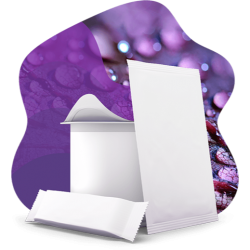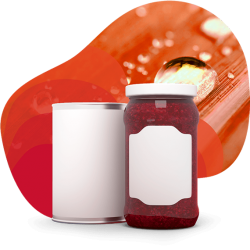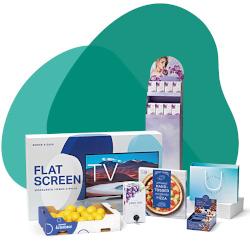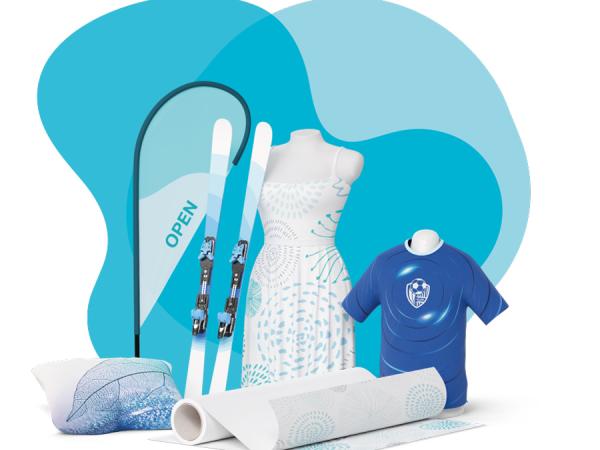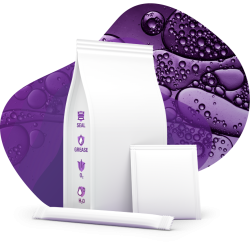
Five good reasons to choose digital sublimation printing
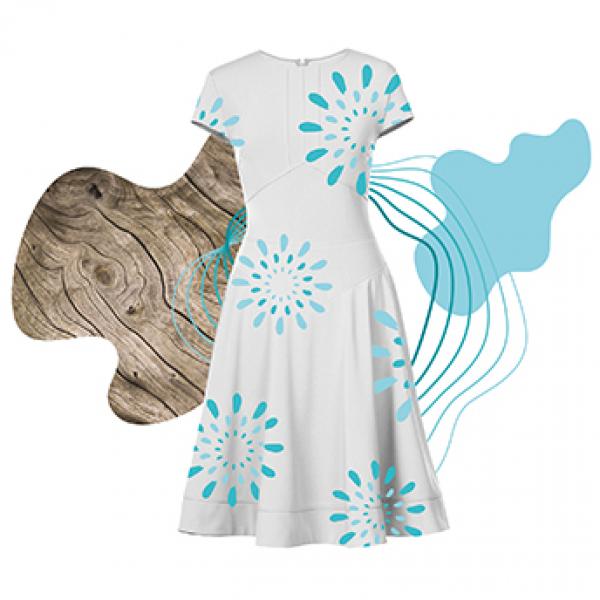
Are you still looking for the right printing process for polyester-based textiles? Learn about the benefits of sublimation printing and why Sappi’s dye sub portfolio is the perfect choice.
There are many different options available for printing textiles: flex and flock transfer printing, screen printing, digital direct printing and digital sublimation printing. Each printing process has its benefits. However, digital sublimation printing is the best option of all when it comes to polyester-based textiles.
Digital sublimation printing is a printing process in which the individual design is printed on a carrier paper using water-based inks. The transfer process then follows: the dye becomes gaseous with the help of heat through a transfer press or a calender. This process transfers the print directly onto the fabric.
But why are Sappi’s sublimation papers the right choice for your projects?
1. The colour brilliance is so impressive
Dye sublimation printing is known for the high colour brilliance it can produce with a wide colour range, enabling neon colours and even spot colours, for example. Furthermore, the colours do not fade after washing or high exposure to solar radiation and remain bright and vibrant for a long time. This is because the heat produced during the sublimation process anchors the dye firmly into the textile yarns.
2. High reproduction rate and precision
With sublimation printing, not only can full cover designs and simple motifs be realised with the highest precision, but various complex designs as well. This means that even very delicate patterns and colour nuances can be reproduced. The reproducibility rate of these complex and filigree designs is particularly high with Sappi’s dye sublimation papers.
3. Environmentally friendly and sustainable
Dye sublimation printing saves resources due to its efficient deployment. Although there are two steps involved in the digital sublimation process – printing and sublimating – the colours are fixed directly during sublimation. This means that no additional fixing is required, for example with steam. The dyes are completely anchored in gas form, which means that the fabric does not need to be washed after printing, making additional water consumption unnecessary.
As high transfer rates are possible with our high-quality dye sublimation papers, only the necessary amount of ink is printed, with minimal rejects.
The sublimation process is sustainable, because the inks are water-based and totally solvent-free. Furthermore, our sublimation papers can be 100% recycled.
4. Guarantees high flexibility and saves money
Digital printing is suitable for both small jobs and large-scale productions – so users benefit from high productivity with sublimation printing. And whether your project involves large or small print volumes, less hardware is required overall, meaning that personalised projects such as team jerseys or a birthday shirt are easy to handle.
As there is also no need for expensive printing forms, such as in the case of screen printing, the equipment needed for digital sublimation is relatively inexpensive. And since the same equipment can be used for a wide range of applications, such as fashion, home textiles, sportswear, signage and many more, production is always flexible, reliable and efficient. This is extremely beneficial, particularly in the case of small print runs.
5. Our sublimation paper is the perfect choice
With their many different types of coatings and grammage, Sappi’s two sublimation paper brands – Transjet and Basejet – make it possible to reliably convert a wide range of projects. Thanks to our extensive portfolio, practically any type of sublimation project can be carried out in high quality. Whether it’s textiles or hard substrates such as metal or glass, our users benefit from high colour vibrancy, consistent results, optimal efficiency and reliable outcomes for their projects.
